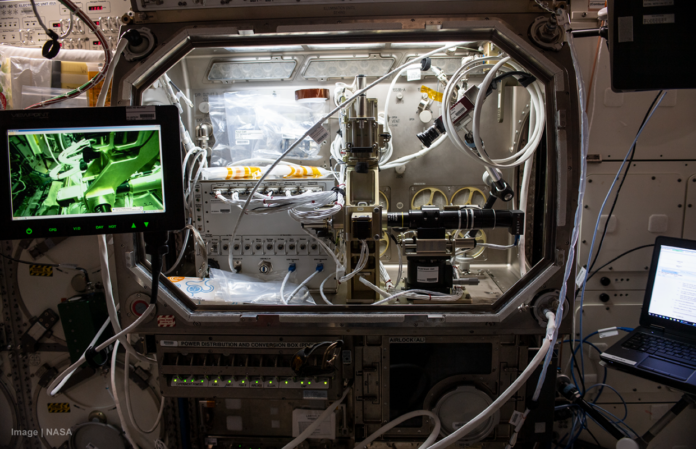HUNTSVILLE — Hardware designed and manufactured by Teledyne Brown Engineering recently arrived at the International Space Station, the Huntsville-based company announced.
A SpaceX cargo resupply mission carried a dozen pieces of hardware for the Ring Sheared Drop experiment facility. The mission launched March 15.
This experiment will help scientists understand and control protein aggregation in systems where there is a large concentration in the presence of free surfaces, which is currently an issue for the pharmaceutical manufacturing industry.
“We are thrilled to see the progression of this program and to have supported its success over the last five years,” said Scott Hall, president of TBE. “Our company is dedicated to this important cause which we hope will assist in the development of the newest generation of medicines, such as those for treating cancers and other diseases.”
The science hardware includes six frozen sample syringes with protein solution and six refurbished test cells. The company’s process ensures that the sample syringes remain at precise cold temperatures from laboratory pick-up through launch and on-orbit operations.
Teledyne is also supporting the development, evaluation, and uploading of software for science video data compression.
Teledyne Brown Engineering, working with the science team at Rensselaer Pyrotechnic Institute in New York, designed, developed, and integrated RSD on the ISS under contract to the Marshall Space Flight Center.
RSD is a Teledyne Brown Engineering-designed and manufactured device which uses the microgravity of space to suspend a one-inch diameter drop of liquid between two rings. One ring rotates while the other is stationary, creating a shear flow in the liquid drop to aid in the study of how complex fluids behave.
Understanding this behavior will help with medicinal production and advances, the company said.
Microscopes equipped with digital cameras record the data for downlink to scientists on Earth in near real-time. The experiments can range from minutes to days of continuous operations. RSD and the IBP experiments operate in NASA’s Microgravity Science Glovebox.
Don’t miss out! Subscribe to our email newsletter to have all our smart stories delivered to your inbox.



